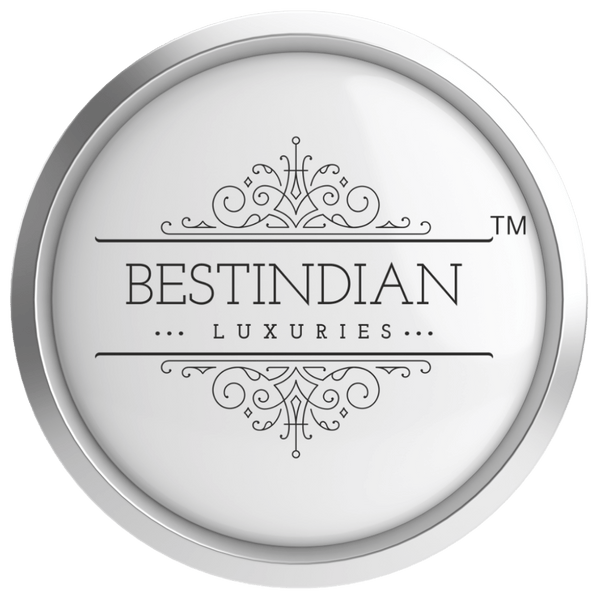Natural & Organic Luxuries — Made in India, Honored Worldwide
Natural & Organic Luxuries from BestIndian™ are proudly Made in India. Crafted in the Himalayas and Kannauj, they blend Ayurvedic heritage with organic purity and modern science- every creation a tribute to India’s artisanal excellence and conscious luxury.

The Spirit of Made in India
For BestIndian™, “Made in India” is not just a label — it is a philosophy of heritage and quality. Our luxuries showcase India’s timeless wisdom, its unparalleled craftsmanship, and its natural abundance. Every formula is an authentic expression of the country’s Ayurvedic roots and modern innovation, proving that India can lead the world in conscious luxury.
Born in the Himalayas
The Himalayas are more than mountains — they are the cradle of purity. Our beauty and wellness luxuries are created in this pristine, pollution-free environment, where mineral-rich soil nurtures potent Ayurvedic herbs.
- Organic Farming: Partner farmers in Uttarakhand cultivate our botanicals sustainably, ensuring purity while uplifting local communities.
- Scientific Excellence: Our GMP, ISO 9001:2015 & COSMOS Organic certified, carbon-neutral facility merges Ayurvedic traditions with cutting-edge science.
- Cultural Legacy: Known as the “land of Ayurveda,” Uttarakhand has been revered for millennia as the source of healing herbs, celebrated in classical Ayurvedic texts.
From saffron and rose to amla and neem, the Himalayas give us botanicals of unmatched potency — the foundation of our Natural & Organic Luxuries.

The Kannauj Legacy of Perfumery
If the Himalayas are the heart of purity, then Kannauj is the soul of fragrance. Known as India’s ancient perfume capital, Kannauj once supplied natural fragrances to the nobility of Egypt, Rome, and Mesopotamia. BestIndian™ is proud to revive this timeless heritage for the modern world.
- Authentic Craftsmanship: Our perfumery in Kannauj follows traditional distillation methods that honor India’s legendary artistry.
- Cultural Heritage: From the Kamasutra to the Bṛhat Saṃhitā, India’s ancient texts documented perfumery as one of the highest arts of refinement.
- Modern Rebirth: BestIndian™ reimagines this tradition with alcohol-free Perfume Elixirs — skin-safe, long-lasting, and 100% natural.
In every drop of fragrance, Kannauj’s legacy is alive — elegant, authentic, and unmistakably Indian.

Our Commitment to Natural & Organic Purity
For BestIndian™, “Natural & Organic” is more than a trend — it is our identity. Every luxury we create is:
- 100% Natural & Vegetarian – Powered by pure botanicals, free from parabens, sulfates, and harsh alcohols.
- Crafted in a Certified Facility – Manufactured in a GMP, ISO 9001:2015 & COSMOS Organic certified, carbon-neutral facility in the Himalayas.
- Cruelty-Free & Ethical – No animal testing, no shortcuts, only conscious choices.
This is what defines luxury without compromise — formulas that respect your skin, your trust, and the planet.

Why India Leads the Future of Luxury
Global beauty brands often borrow from India’s wisdom — but BestIndian™ brings it to the world with authenticity. By combining Ayurvedic heritage, Himalayan purity, and Kannauj craftsmanship, India is not only preserving its traditions but also shaping the future of natural luxury.
When you choose BestIndian™, you are choosing more than beauty — you are choosing a movement that proves India can set the gold standard for ethical, natural, and world-class luxury.
FAQs — Natural & Organic Luxuries
Q1: What are BestIndian™ Natural & Organic Luxuries?
They are skincare, hair care, and perfume elixirs crafted with 100% natural, vegetarian ingredients. Rooted in Ayurveda and refined with science, they embody India’s purity and craftsmanship.
Q2: Where are BestIndian™ luxuries made?
Our luxuries are proudly Made in India, created in the Himalayas at our certified facility and in Kannauj, India’s ancient perfume capital.
Q3: What makes the Himalayas important for BestIndian™?
The Himalayas provide a pristine, mineral-rich environment for cultivating Ayurvedic herbs. They ensure the purity and potency of our natural ingredients.
Q4: Why does BestIndian™ highlight Kannauj in its philosophy?
Kannauj is India’s perfume capital with a heritage spanning millennia. BestIndian™ revives this legacy through modern, alcohol-free Perfume Elixirs crafted with authentic methods.
Q5: Are all BestIndian™ luxuries cruelty-free and vegetarian?
Yes. Every BestIndian™ creation is 100% vegetarian, cruelty-free, and crafted with respect for both nature and living beings.
Explore More
- Our Philosophy – Discover the values that guide every BestIndian™ luxury.
- About Us – Learn the story of our journey from Ayurveda to global luxury.
- Our Founder – Meet Nitin Sahrawat, the visionary behind BestIndian™.
